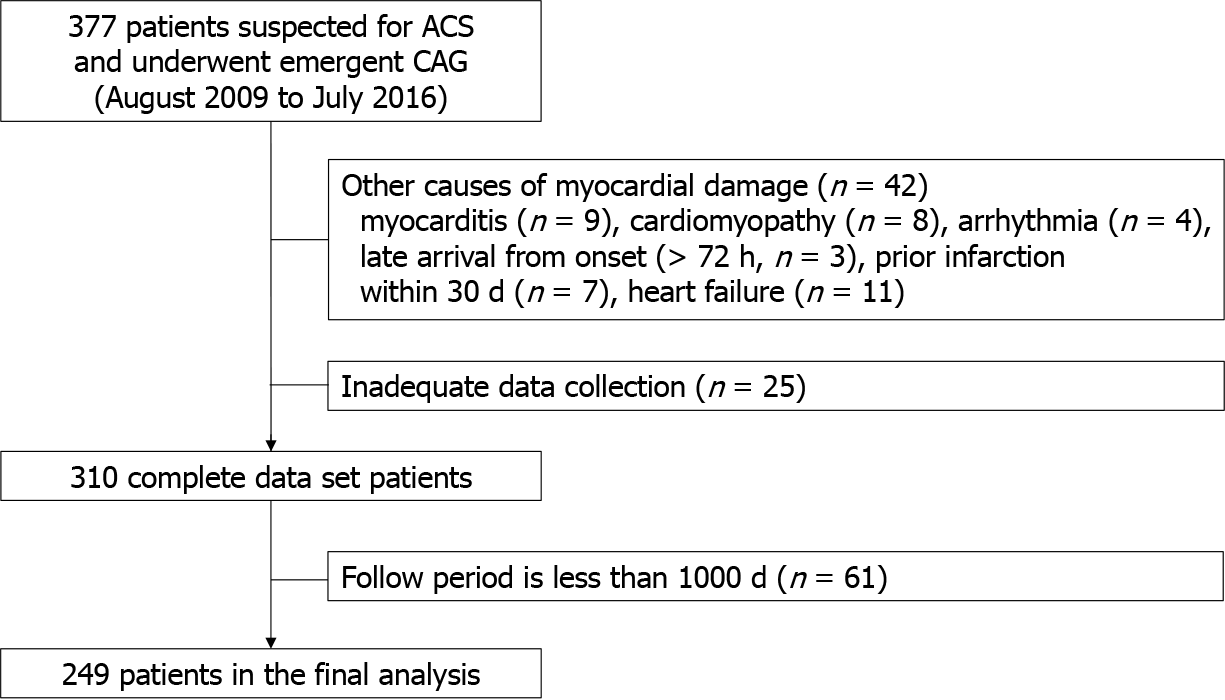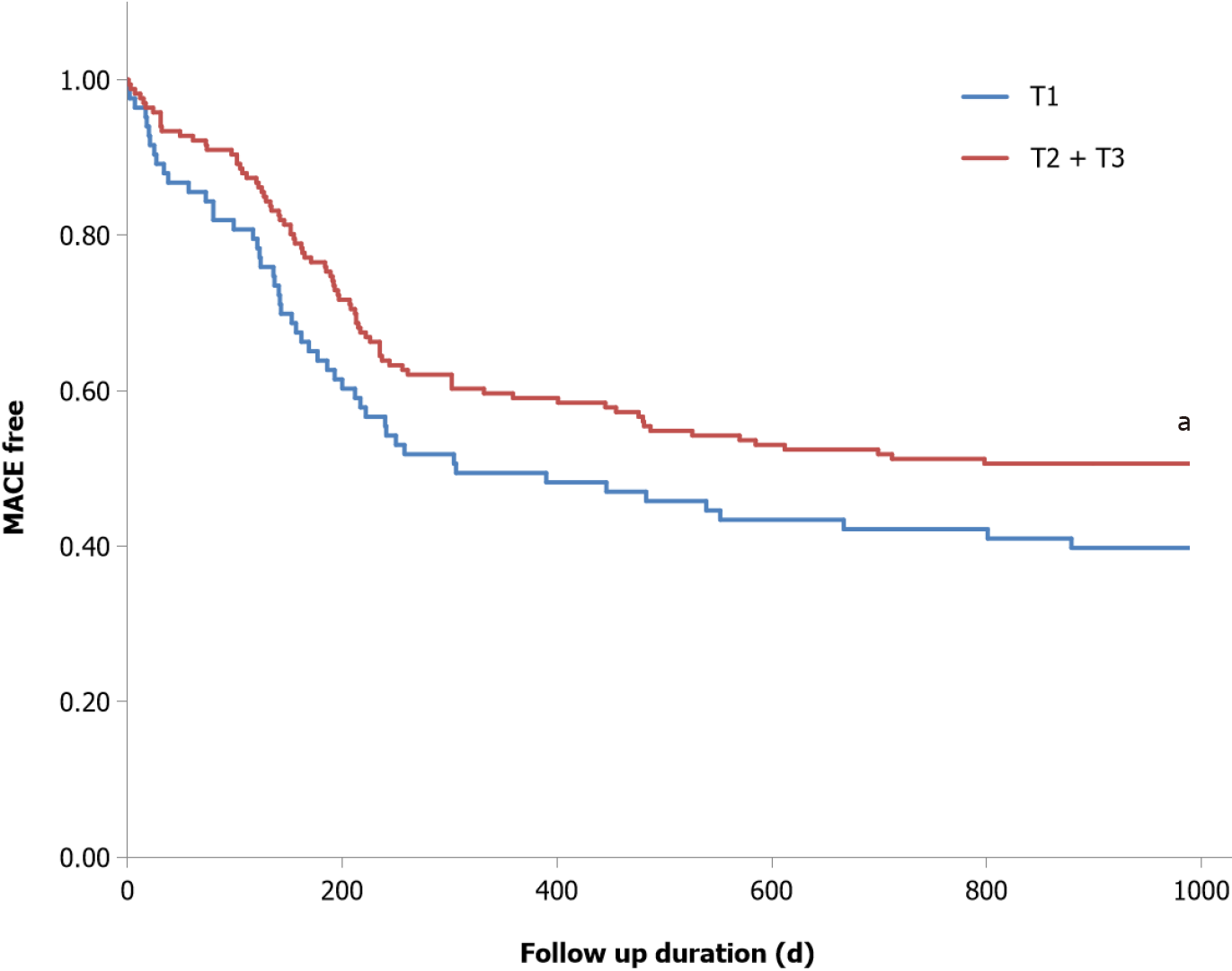Copyright
©The Author(s) 2024.
World J Cardiol. Jun 26, 2024; 16(6): 329-338
Published online Jun 26, 2024. doi: 10.4330/wjc.v16.i6.329
Published online Jun 26, 2024. doi: 10.4330/wjc.v16.i6.329
Figure 1 Flow diagram of the inclusion of study subjects.
ACS: Acute coronary syndrome; CAG: Coronary angiography.
Figure 2 Cumulative freedom from the risk of major adverse cardiac events during three years of follow-up.
Patients classified into the second (T2) and third (T3) tertiles of the change in lipoprotein(a) [Lp(a)] circulating levels of Lp(a) after percutaneous coronary intervention for acute coronary syndrome, The changes from 0 to 12 h [Lp(a)Δ0-12], showed significantly favorable outcomes compared to those classified into the first tertile (T1) in terms of all-cause death, nonfatal myocardial infarction and stroke, or new angina pectoris (log-rank test χ2 = 4.23, aP < 0.05). MACE: Major adverse cardiac events.
- Citation: Saeki Y, Sawaguchi J, Akita S, Takamura TA, Fujibayashi K, Wakasa M, Akao H, Kitayama M, Kawai Y, Kajinami K. Initial decrease in the lipoprotein(a) level is a novel prognostic biomarker in patients with acute coronary syndrome. World J Cardiol 2024; 16(6): 329-338
- URL: https://www.wjgnet.com/1949-8462/full/v16/i6/329.htm
- DOI: https://dx.doi.org/10.4330/wjc.v16.i6.329














